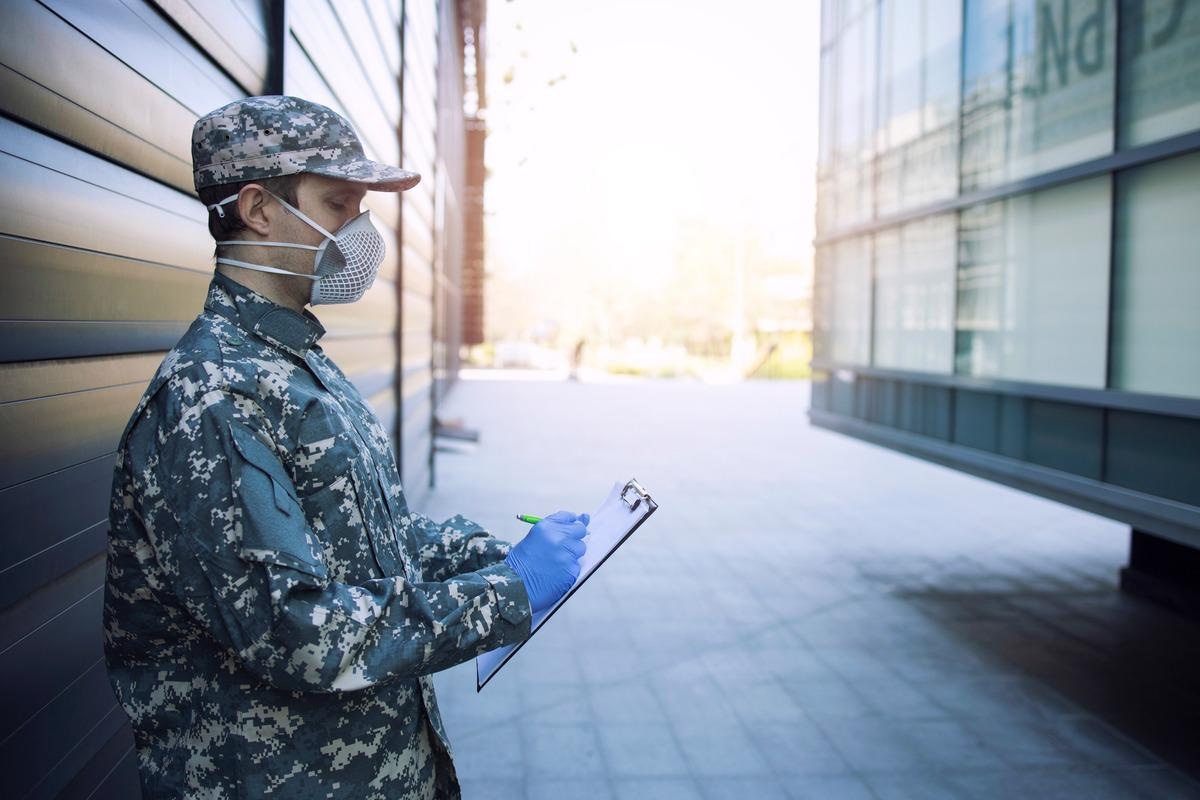The coronavirus disease 2019 (COVID-19) epidemic has interrupted operations in a variety of institutional settings, necessitating considerable changes. Similarly, the COVID-19 outbreak had a negative impact on military settings. Outbreaks in basic training camps are alarming since they hinder the influx of new soldiers into the military, which is crucial in ensuring force strength. The fact that outbreaks occurred in basic training settings despite the implementation of preventive measures indicates that these protocols must be improved.

Study: Prioritizing interventions for preventing COVID-19 outbreaks in military basic training. Image Credit: Aleksandar Malivuk/Shutterstock
The prevention of epidemics during basic training offers a plethora of obstacles in military settings. To begin with, new military recruits are usually healthy and young, making it likely that they will acquire very moderate symptoms if any.
Second, basic training requires groups of people to train in close proximity (e.g., first aid, partner-based strength, and conditioning) and to spend nearly all of their time together, including in situations where transmission is most likely to occur, such as dining, sleeping, exercising and performing personal hygiene tasks.
Third, testing upon arrival predisposes to the risk of missing infections among trainees who were infected soon before or during transit. Additionally, the current practice of not screening trainers and support workers routinely opens routes for entry and spread of the viral infection.
The study
A new study published in the medRxiv* preprint server investigated improved strategies for outbreak prevention, by developing an agent-based model of a hypothetical cohort of trainees in a United States Army station.
The investigation calibrated the model, using data from testing conducted upon arrival and 18-22 days later, at two United States Army bases that had COVID-19 outbreaks. This influenced the model's assumptions regarding the initial prevalence of infection among recruits and the capacity for transmission in a basic training scenario, as indicated by the basic reproduction number, R0.
Here, the researchers studied the efficacy of four strategies in reducing the frequency and magnitude of outbreaks – minimizing trainer and support staff introductions; boosting trainees' arrival testing; increasing trainee compliance with wearing face masks and exercising physical distancing; and raising trainee immunity through pre-arrival vaccination.
Findings
The report showed that certain components of basic training necessitate tailored methods for outbreak prevention—suggesting that customized techniques may be necessary in other settings as well. It was noted that introductions by trainers and support staff pose significant vulnerability. The increased rounds of testing after arrival led to more false-positive test results and seeding outbreaks once such individuals return to training units. Sensitivity analysis revealed that such inaccuracies in test specificity can aggravate this phenomenon.
As long as group isolation is required, the results imply that testing immediately upon exit from group isolation is a promising technique for limiting this risk. Notably, the study found that this method of testing appeared to be a feasible solution, since it does not significantly increase the time spent by the trainees in isolation and, in certain cases, may tend to lower it. The calibration resulted in basic reproduction numbers, R0, of 11.3 (95 % confidence CrI: 4.9-17.9) and 10.4 (95 percent CrI: 4.5-17.8) for the two known outbreaks employed in the calibration.
Study limitations
This study has a few limitations. The present analysis lacked precise information on the contact structure within training units. In the absence of this information, researchers adopted the simplistic premise that all members of a training unit had equal contact with one another. It also did not consider sex segregation at certain stages of the basic training process, the extent and nature of contacts among trainees, trainers, and support staff, nor contact tracing. Some parameters, for instance – mask effectiveness, baseline immunity, and testing accuracy were also unclear.
In conclusion, the findings demonstrate that military basic training is a unique environment that necessitates the development of tailored solutions for minimizing COVID-19 outbreaks. The results suggested that initial and periodic testing of trainees and support staff who interact with trainees are critical.
As with other settings, results highlight the importance of proper use of face masks and physical separation, and that a transmission-blocking vaccination may be useful in avoiding outbreaks. Simultaneously, the relatively high R0 values obtained from two outbreaks in basic training settings signal that these treatments will have a lower impact on basic training than in community settings.
Journal reference:
Camargo Espana, G., Perkins, A., Pollett, S., et al. (2021). Prioritizing interventions for preventing COVID-19 outbreaks in military basic training. medRxiv preprint. doi: https://doi.org/10.1101/2021.11.28.21266969 https://www.medrxiv.org/content/10.1101/2021.11.28.21266969v1